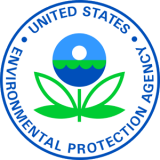EPA Region 7 Responding to Mercury Spill at Residences in Wentzville, Missouri, Area

LENEXA, KAN. (NOV. 2, 2021) - U.S. Environmental Protection Agency (EPA) Region 7 On-Scene Coordinators (OSCs) and contractors are responding to several residences in Wentzville, Missouri, where high levels of mercury have been found after a child was taken to a suburban St. Louis hospital suffering from elevated mercury blood levels. Children in the residence reportedly had been playing with and spilled a small vial of elemental mercury approximately five months earlier.
The hospital called EPA Region 7’s Emergency Spill Line on Oct. 29, after they determined that the child was suffering from mercury poisoning. The Missouri Department of Natural Resources (MoDNR) performed an initial mercury vapor screening of the child’s residence on Oct. 30. Elevated concentrations were detected throughout the home. Further assessments by EPA OSCs on Oct. 31 found high levels of mercury vapors in two other residences, with assessments continuing. At room temperature, exposed elemental mercury can evaporate to become an invisible, odorless toxic vapor.
Families from impacted residences have relocated, while response crews continue to remove contaminated personal items and materials from the homes to decrease mercury vapor concentrations.
EPA and MoDNR have completed assessments at six schools in the Wentzville School District identified as potential locations for mercury contamination from the spill. All of the schools assessed were found not to be contaminated with mercury.
Mercury can be very difficult to clean up. It is extremely hard to get out of clothes, furniture, carpet, floors, walls, and other porous items. Once spilled, mercury beads can scatter and settle into nooks and cracks in the floor. Many standard techniques for cleaning up a liquid spill (like using a mop or towels) should not be used to clean up mercury; in fact, this is likely to spread the mercury and increase toxic vapors. Do not vacuum up spilled mercury, because it will vaporize and increase exposure. If mercury is not properly cleaned up, it can remain for months or years and cause an ongoing health risk. Never put mercury-contaminated clothing in a washing machine. Bag clothes and shoes and put them outside in the sun.
How can families reduce the risk of exposure to mercury? Carefully handle products that contain mercury, such as thermometers or fluorescent light bulbs. Teach children not to play with shiny, silver liquids. Many states and local agencies have developed collection/exchange programs for mercury-containing devices such as thermometers, manometers and thermostats. Some counties and cities also have household hazardous waste collection programs. For information about these programs, contact your local officials to find out how to dispose of unwanted or damaged items containing mercury. You can also use Earth911's Recycling Search tool to find a recycling center near you.
Possible symptoms of mercury poisoning may include:
- Loss of peripheral vision
- "Pins and needles" feelings, usually in the hands, feet, and around the mouth
- Lack of coordination of movements
- Impairment of speech, hearing, walking and/or
- Muscle weakness
Health Effects of Exposures to Mercury
Mercury is a neurotoxin. How someone's health may be affected by exposure to mercury depends on a number of factors:
- The form of mercury (for example, methylmercury or elemental [metallic] mercury)
- The amount of mercury in the exposure
- The age of the person exposed (younger children and unborn infants are the most vulnerable)
- How long the exposure lasts
- How the person is exposed – breathing, eating, skin contact, etc., and
- The health of the person exposed
The effects of mercury exposure can be very severe, subtle, or may not occur at all, depending on the factors above. Anyone with concerns about mercury exposure should consult their physician and/or their poison control center at 1-800-222-1222.
# # #
Learn more about EPA Region 7
View all Region 7 news releases
Connect with EPA Region 7 on Facebook: www.facebook.com/eparegion7
Follow us on Twitter: @EPARegion7
